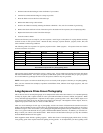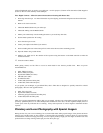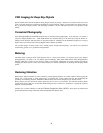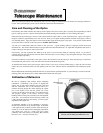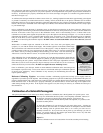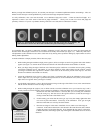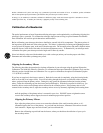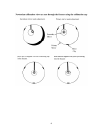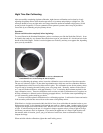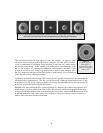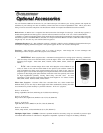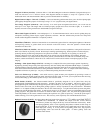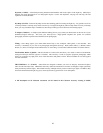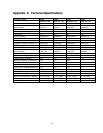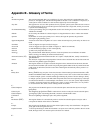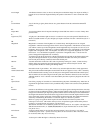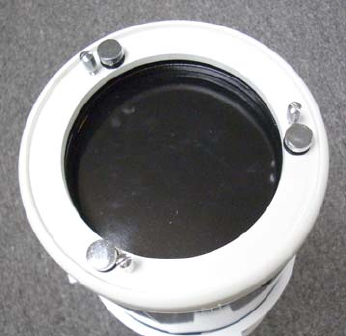
Night Time Star Collimating
After successfully completing daytime collimation, night time star collimation can be done by closely
adjusting the primary mirror while the telescope tube is on its mount and pointing at a bright star. The
telescope should be set up at night and a star's image should be studied at medium to high power (30-60
power per inch of aperture). If a non-symmetrical focus pattern is present, then it may be possible to
correct this by re-collimating only the primary mirror.
Procedure
(Please read this section completely before beginning)
To star collimate in the Northern Hemisphere, point at a stationary star like the North Star (Polaris). It can
be found in the north sky, at a distance above the horizon equal to your latitude. It’s also the end star in the
handle of the Little Dipper. Polaris is not the brightest star in the sky and may even appear dim, depending
upon your sky conditions.
Figure 7-6 Primary mirror. Large thumbscrews are for collimation and
Small thumbscrews are for locking the mirror in place
Prior to re-collimating the primary mirror, locate the collimation screws on the rear of the telescope tube.
The rear cell (shown in Figure 7-6) has three large thumbscrews which are used for collimation and three
all thumbscrews which are used lock the mirror in place. The collimation screws tilt the primary mirror
ou will start by loosening the small locking screw a few turns each. Normally, motions on the order of
n
1
/
8
turn will make a difference, with approximately a
1
/
2
to
3
/
4
turn being the maximum required for the
rge collimation screws. Turn one collimation screw at a time and with a collimation tool or eyepiece see
ow the collimation is affected (see the following paragraph below). It will take some experimenting but
ou will eventually get the centering you desire.
It is best to use the optional collimation tool or collimating eyepiece. Look into the focuser and notice
the secondary reflection has moved closer to the center of the primary mirror.
ith Polaris or a bright star centered within the field of view, focus with either the standard ocular or your
ighest power ocular, i.e. the shortest focal length in mm, such as a 6mm or 4mm. Another option is to use
longer focal length ocular with a Barlow lens. When a star is in focus it should look like a sharp pinpoint
f light. If, when focusing on the star, it is irregular in shape or appears to have a flare of light at its edge,
is means your mirrors aren’t in alignment. If you notice the appearance of a flare of light from the star
at remains stable in location, just as you go in and out of exact focus, then re-collimation will help
arpen the image.
hen satisfied with the collimation, tighten the small locking screws.
sm .
Y
a
la
h
y
if
W
h
a
o
th
th
sh
W
44



